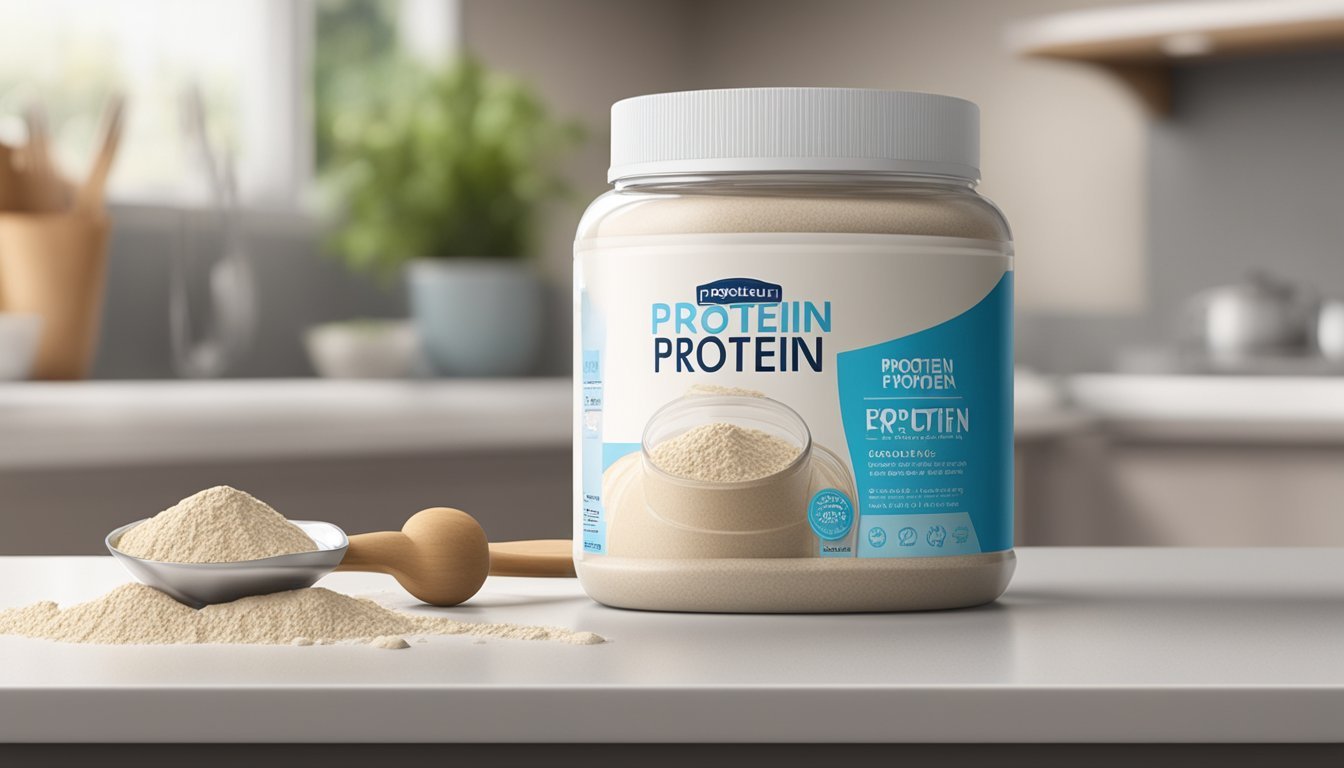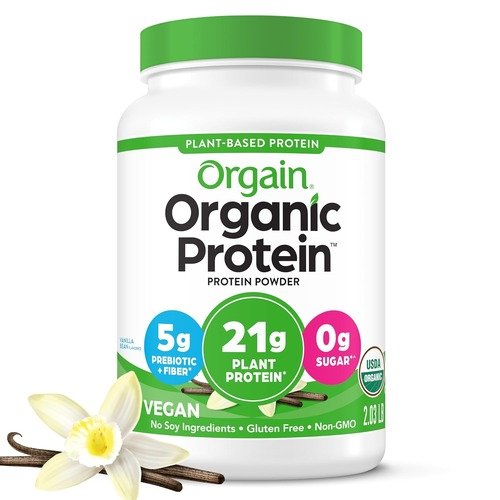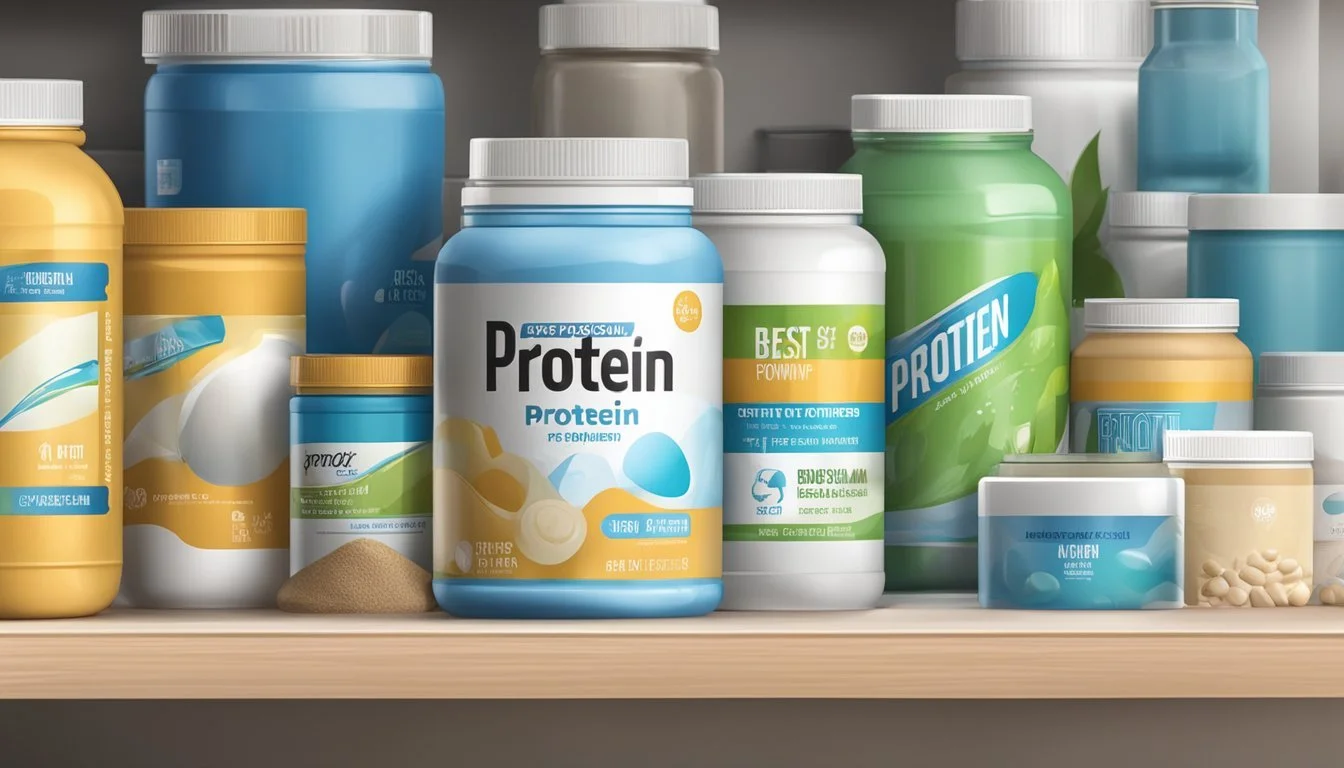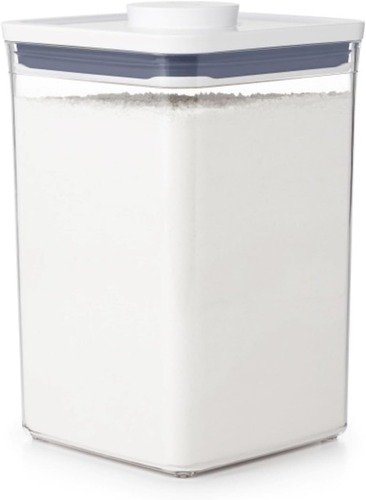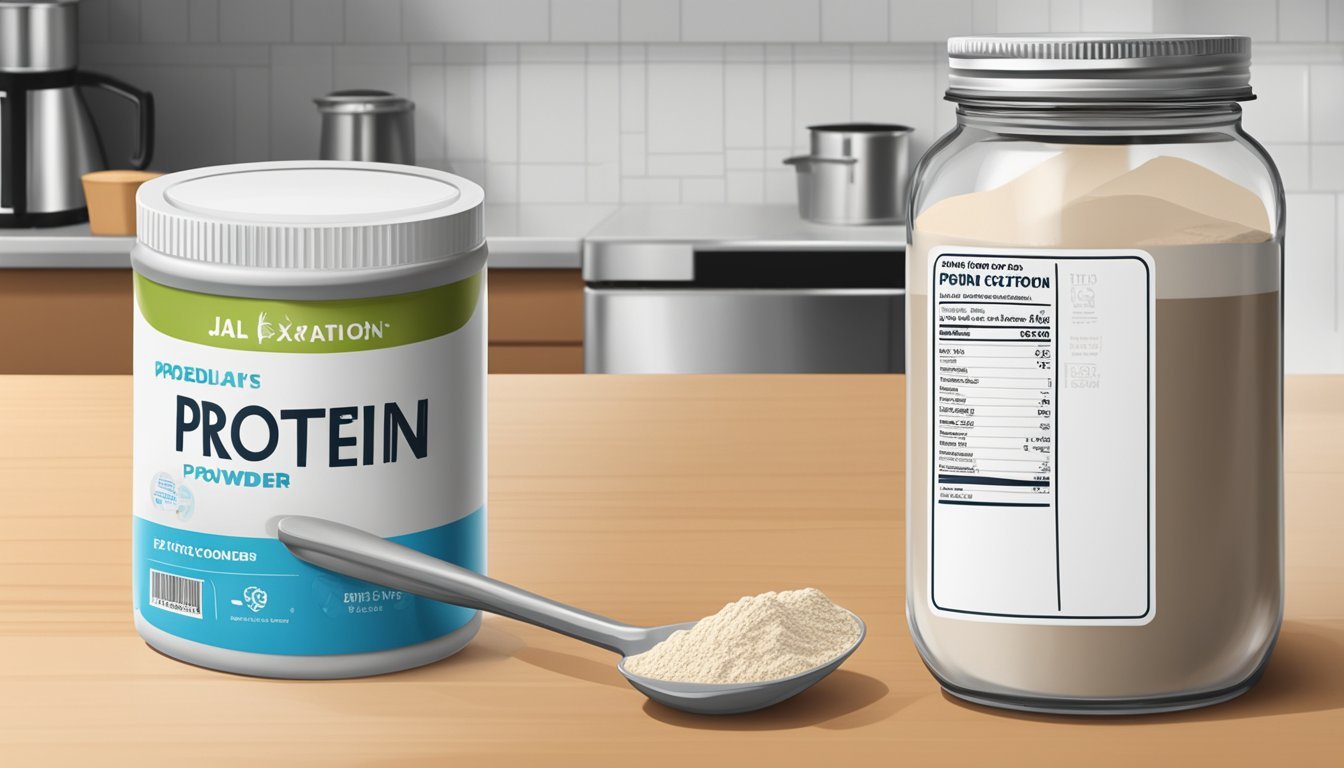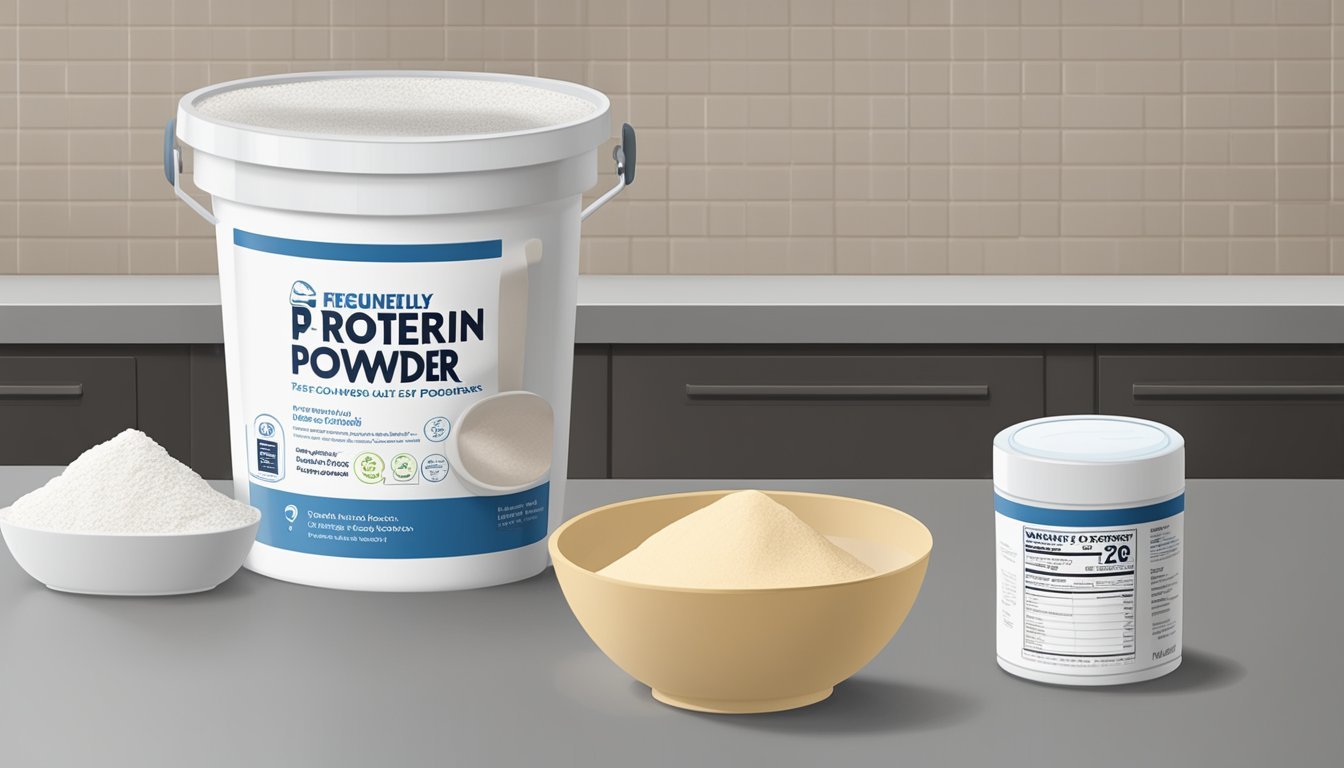How Long Does Protein Powder Last?
Understanding Expiration and Storage
Protein powder (how long does protein powder last?)is a popular dietary supplement used by individuals looking to build muscle, lose weight, or simply improve their nutritional intake. It comes in various forms, including whey, casein, soy, pea, and hemp, and is renowned for its ability to provide a convenient source of high-quality protein. The shelf life of protein powder is a matter of importance for consumers who are concerned about the potency and safety of the product.
While protein powder does have an expiration date, its shelf-stability depends on several factors including the type of protein, the presence of preservatives, and the conditions under which it is stored. Generally, protein powders last anywhere from six to 24 months, with variances depending on the manufacturer's guidelines. Proper storage plays a crucial role in maximizing the product's lifespan, with a cool, dry environment being ideal to preserve its quality.
Consumers should be mindful of signs that protein powder may have deteriorated, such as an off smell, change in texture, or altered taste. The effectiveness of protein powder may diminish over time due to nutrient degradation, but if stored correctly, many protein powders can maintain their quality well beyond the ‘best by’ date. It's important for consumers to understand these aspects to safely and effectively incorporate protein powder into their dietary regimen.
Understanding Protein Powder
Protein powders are dietary supplements designed to help people increase their protein intake. They are commonly derived from various sources, such as whey, casein, pea, rice, soy, collagen, and egg white. The choice of protein type often depends on dietary preferences, allergies, and specific health goals.
Plant-based options, like pea, rice, and soy powders, cater to vegetarians, vegans, and those with lactose intolerance. They are considered comprehensive sources of protein, providing the body with essential amino acids.
On the other hand, animal-based protein powders, such as whey and casein, are byproducts of cheese production. Whey protein is favored for its fast absorption rate, making it a popular post-workout supplement. Conversely, casein is digested more slowly, resulting in a gradual release of amino acids.
Here is a simple breakdown of common protein powders:
Whey: Quick absorption, supports muscle repair.
Casein: Slow digestion, helps in long-term muscle nourishment.
Pea: Plant-based, rich in iron, beneficial for muscle growth.
Rice: Plant-based, usually combined with pea protein to complete amino acid profile.
Soy: Plant-based, contains all essential amino acids.
Collagen: Promotes skin and joint health.
Egg White: High in protein, low in carbohydrates.
Each type of protein powder offers unique benefits. Consumers should consider their nutritional needs, dietary restrictions, and personal health goals when selecting a protein supplement. These powders serve as a convenient way to support an individual's protein requirements, enhance muscle recovery, and contribute to overall nutrition.
Make your life easier by ordering protein powder online; it's just a few clicks away!
Shelf Life Explained
Understanding how long protein powder lasts is crucial for maintaining its efficacy and safety. This section examines the shelf life of protein powders, focusing on the expiration date's relation to protein potency, how to recognize spoilage, and the factors influencing protein powder stability.
Expiration Date and Protein Potency
Protein powders typically come with an expiration date that serves as a guideline for optimal quality. The potency of the protein—the amount and integrity of the amino acids it contains—may decrease as the product approaches and passes this date. While protein powders can remain stable for months or even years past the printed expiration date, their nutritional quality may diminish over time.
Signs of Spoilage
When protein powder starts to go bad, there are tangible signs that one should look for. These include:
Smell: An off or rancid odor is often the first indication that protein powder is spoiling.
Texture: Powder should be loose and free-flowing. The presence of clumps or lumps can suggest moisture intrusion, which fosters spoilage.
Taste: A change or deterioration in taste can signal that the protein powder is no longer of its best quality.
Discoloration: Any change in color can be a sign that the protein powder has begun to spoil.
Factors Affecting Protein Powder Stability
The stability and shelf life of protein powder are affected by various factors, such as:
Storage conditions: Exposure to heat, moisture, or sunlight can degrade protein powder more quickly.
Packaging: Airtight, moisture-resistant containers help preserve the powder's shelf life.
Type of protein: Different protein sources may have varying shelf lives. For instance, whey and casein proteins have a longer shelf life than plant-based proteins.
Protein powders are hygroscopic, meaning they can absorb moisture from the air. Proper storage and handling are essential to prevent spoilage and maintain the product's stability and efficacy.
Storage Guidelines
Maintaining the quality and extending the shelf life of protein powder hinges on proper storage practices.
Ideal Storage Conditions
Protein powders should be kept in a cool, dry place, away from sources of heat and light which can degrade the product's quality. Temperature should be stable, avoiding areas prone to fluctuations that can cause condensation. To ensure maximum freshness, protein powder should be stored in an airtight container. If the product's packaging is not fully resealable, transferring the contents to a container with a tight-fitting lid is advisable. For those living in warmer climates or during summer months, placing protein powder in the refrigerator can help to keep it cool and protect against humidity.
List of ideal storage conditions:
Cool environment (below room temperature)
Low humidity levels
Absence of direct sunlight
Sealed storage to minimize air exposure
Avoid the crowds and shop for airtight containers online from the comfort of your home!
Impact of Improper Storage
Moisture and humidity are detrimental to protein powder, leading to clumping and potential for microbial growth. Heat can cause the protein to denature, potentially reducing its nutritional value. Prolonged exposure to light and air can also degrade the powder, affecting flavor and potency. To mitigate these risks, one should avoid storing protein powder near ovens, stovetops, or windows where sunlight can penetrate. A cabinet or pantry that is cool, dark, and dry provides the ideal shield from these damaging elements.
Table of potential storage issues:
Element Possible Consequences Moisture/Humidity Clumping, microbial growth Heat Denaturation of proteins Light Degradation of quality Air Exposure Loss of flavor and potency
Health and Safety Considerations
When it comes to protein powder, the health and safety of consumers are paramount. This section focuses on the implications of consuming expired protein powder and the measures necessary to prevent contamination and bacterial growth.
Consuming Expired Protein Powder
Consuming protein powder past its expiration date may lead to several health risks. Over time, expired protein can lose its nutritional efficacy, which might diminish its benefits in muscle recovery and growth. There's also an increased risk of spoilage due to the potential growth of bacteria or mold, which can lead to food poisoning. If a consumer notices changes in taste, texture, or an unpleasant odor in the protein powder, these are often signs of spoilage, and it's best to discard the product to avoid adverse side effects.
Changes in protein powder that signify spoilage:
Altered taste
Gritty texture
Rancid odor
Preventing Contamination and Bacteria Growth
Maintaining the quality and safety of protein powder involves proper storage and handling to prevent contamination and bacterial growth. Keeping the powder in a cool, dry place away from moisture and heat will help prolong its shelf life. Ensuring that scoops and utensils used are clean will also minimize the chances of contaminating the powder. Moisture is a primary culprit in promoting bacterial growth, so it's crucial that the protein powder remains dry. Consumers should also always seal the container tightly after use.
Key steps to prevent contamination:
Store in a cool, dry environment.
Keep utensils clean.
Avoid moisture contact.
Seal the container properly.
Maximizing Protein Powder Lifespan
To ensure the quality and freshness of protein powder, proper storage and handling are essential. Maintaining the stability of the product will help retain its nutritional value and prevent spoilage.
Proper Sealing and Packaging
Packaging plays a crucial role in the lifespan of protein powder. Manufacturers often include desiccants and seal the powder in an airtight container with quality materials to preserve the product. After opening, it's imperative to keep the protein powder in its original packaging or transfer it to another airtight container. One should meticulously reseal the package after each use. If the packaging includes a scoop or scooper, it is advisable to use it to avoid moisture from hands contaminating the product.
Best Practices for Storage and Usage
The stability and freshness of protein powder are significantly affected by storage conditions. Here are some best practices:
Temperature: Store in a cool, dry place away from heat sources.
Moisture: Avoid areas prone to dampness or humidity.
Light: Minimize exposure to direct sunlight which can degrade quality.
Additives like lecithin, maltodextrin, and salt are sometimes included by manufacturers to maintain the powder's stability and solubility. They should not be removed or tampered with. Moreover, adhering to the use-by date is important—not just for nutritional value but also for safety.
Utilizing these best practices can greatly increase the shelf-life of protein powder, allowing it to remain a reliable supplement for health and fitness regimens.
Nutritional and Functional Aspects
Protein powders are dietary supplements that aim to provide a concentrated source of protein with varying absorption rates and nutritional qualities. They support muscle gain, recovery, and may contribute to fat loss when accompanied by proper diet and exercise.
Protein Content and Absorption
Protein powders are crafted to deliver a high protein content with a complete amino acid profile for optimal health. The concentration of protein varies, but typically provides 15 to 30 grams per serving. The body's ability to absorb and utilize these proteins plays a critical role in muscle recovery and growth. Whey protein, for instance, is known for its rapid absorption, making it beneficial for post-workout consumption.
Absorption rates:
Fast: Whey protein
Moderate: Soy and egg proteins
Slow: Casein protein
Effects of Degradation on Health
As protein powders age, they can undergo degradation, leading to a decline in nutritional quality. This may affect not just their effectiveness but also their safety. Nutrient degradation, particularly of amino acids, can reduce a protein powder's ability to support muscle recovery and growth. Consumers should ensure their supplement's shelf life has not compromised its health benefits, checking for any off-putting taste, texture changes, or odors indicating spoilage.
Potential health effects:
Reduced nutritional value
Loss of effectiveness in muscle support
Increased risk of consuming spoiled product
It's important for individuals to monitor the state of their protein powders to maintain the supplement’s intended health benefits.
Recognizing Quality and Defects
The lifespan of protein powder is significant for maintaining its quality and nutritional value. Consumers can employ sensory and chemical assessments to determine the viability of their protein powder.
Sensory Quality Assessment
Smell: The presence of a foul or rancid smell indicates that the protein powder may be past its prime. Protein powders should have a neutral aroma or a smell characteristic of their flavors without any off-putting scent.
Texture: A key indicator of a protein powder’s quality is its texture. If a powder normally dissolves well but starts to form clumps or has a chalky consistency, this could signal spoilage or exposure to moisture.
Taste: While taste can be subjective, any sudden change or degradation in the expected flavor of the protein powder might suggest that it has gone bad. Protein powders should retain a consistent taste profile up until their expiration.
Chemical and Physical Changes
Oxidation: When protein powders are exposed to air, they can undergo oxidation, a process that can degrade essential amino acids and affect the powder’s nutritional profile.
Maillard Browning: This reaction mainly affects the appearance and flavor of the protein powder. It is a form of non-enzymatic browning that can occur when sugars in the protein powder react with amino acids, generally due to improper storage.
To maintain the integrity of the protein powder, it's crucial that storage conditions follow the manufacturer's guidelines to prevent chemical changes and to extend the product's shelf life.
Regulations and Industry Standards
The regulations and industry standards surrounding protein powders revolve mainly around labeling requirements and safety protocols. These ensure that consumers are provided with clear information about the product's shelf life and contents, aiming to minimize health risks and food waste.
FDA Guidelines for Supplements
The U.S. Food and Drug Administration (FDA) regulates dietary supplements, including protein powders, under the Dietary Supplement Health and Education Act (DSHEA) of 1994. Under this act, manufacturers are responsible for ensuring that their products are safe before they are marketed. The FDA does not approve dietary supplements for efficacy, but it establishes good manufacturing practices (GMPs) to ensure their identity, purity, strength, and composition. Additives and preservatives included in protein powders must comply with the FDA regulations for food additives.
Labeling and Expiration Information
Labeling guidelines are strict; manufacturers must provide a "Supplement Facts" panel with detailed information on the amounts of active ingredients per serving, plus other ingredient information including additives and preservatives. An expiration date or "best by" date is often included to inform consumers of the estimated shelf life. Experts generally agree that this date is indicative of when the protein powder is expected to retain optimum quality, rather than a definitive safety cut-off. However, it's important for consumers to recognize that consuming products past their expiration may increase risks if not stored properly, despite the shelf life possibly being extended by preservatives.
Consumer Tips
When it comes to protein powder longevity, consumers should pay attention to labels and trust their senses to assess quality. Proper understanding and testing can help ensure the product is both effective and safe to consume.
Understanding Labels and Dates
Protein powders typically come with an expiration date or a use-by date on the packaging. These dates are the manufacturer's best estimate of when the product will start to degrade in quality. However, protein powder can remain safe to consume beyond this date if it has been stored properly. Keep in mind the following:
Expiration Date: This is the date after which the protein powder may not provide the optimal nutritional value as stated on the label.
Use-by Date: This indicates the last recommended day for use for the best quality of the product, not necessarily when it is unsafe to consume.
To reduce food waste, consumers can often use protein powders after these dates, provided they have been stored in a cool, dry place and the texture, color, or smell has not changed significantly.
How to Conduct a Sniff Test
Performing a sniff test can be an effective way to check if protein powder is still good to use. Follow these steps:
Open the container of the protein powder and remove a small amount.
Bring it close to the nose and smell for any off odors.
Normal smell: Slightly sweet or neutral, depending on the flavor.
Rancid smell: Sour or unpleasant odors signify that the protein powder may not be safe to consume.
If the protein powder passes the sniff test and shows no signs of moisture or insects, it's generally safe to use. If any doubt remains, it's best to err on the side of caution and dispose of the protein powder to avoid potential health risks.
Frequently Asked Questions
In determining the longevity and efficacy of protein powder, consumers often inquire about expiration dates and how to assess if the product is still potent and safe for consumption.
Can I Use Protein Powder Past Its Expiration Date?
Most protein powders list a shelf life of about two years post-production, benefiting from additives that help extend this period. Safety and quality may not be compromised immediately after the expiration date; an unopened container of protein powder may last up to 12-18 months past this date when stored correctly. However, it is paramount to consider both the loss of potency and the safety of consumption when using expired protein powder.
How to Determine if Protein Powder Is No Longer Effective?
To evaluate if protein powder has lost its effectiveness or is unsafe, one should look for:
Odor: A change in smell is an indicator of spoilage.
Texture: Any clumping or changes in texture can suggest moisture intrusion, which may lead to mold or bacterial growth.
Taste: An off taste can indicate that the protein powder is no longer fresh.
Visual Inspection: Discoloration or the presence of mold signifies that the protein powder is not safe to consume.
The potency of the powder may diminish over time, so if the product is significantly past the expiration and shows any of these signs, it's advisable to discard it to maintain health and safety standards.


